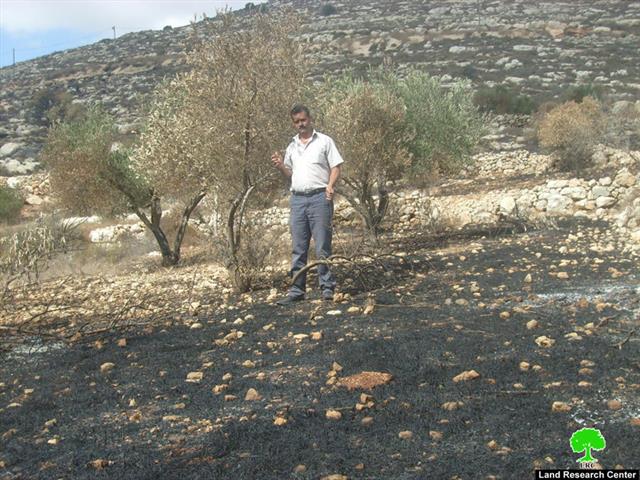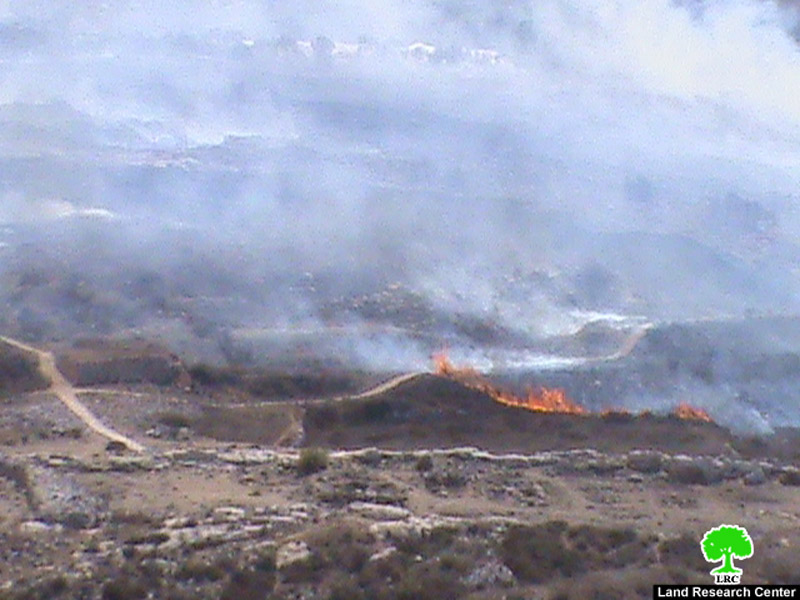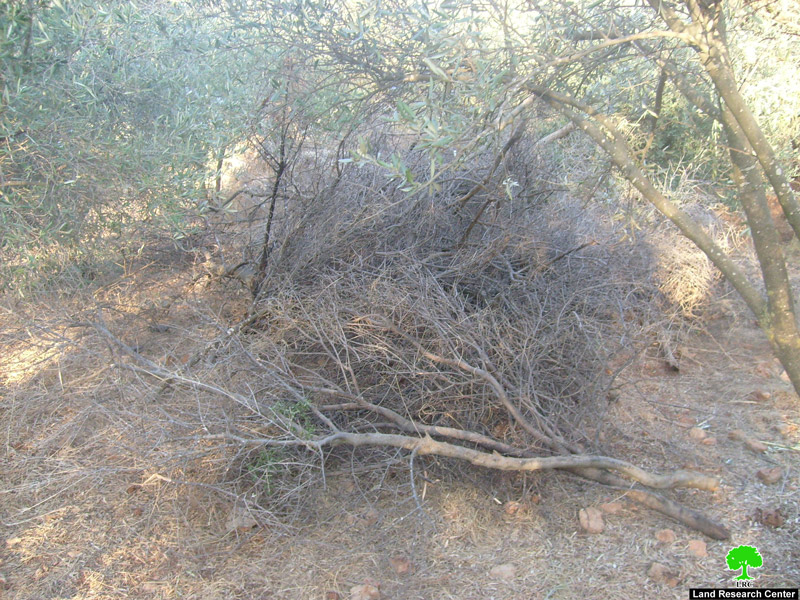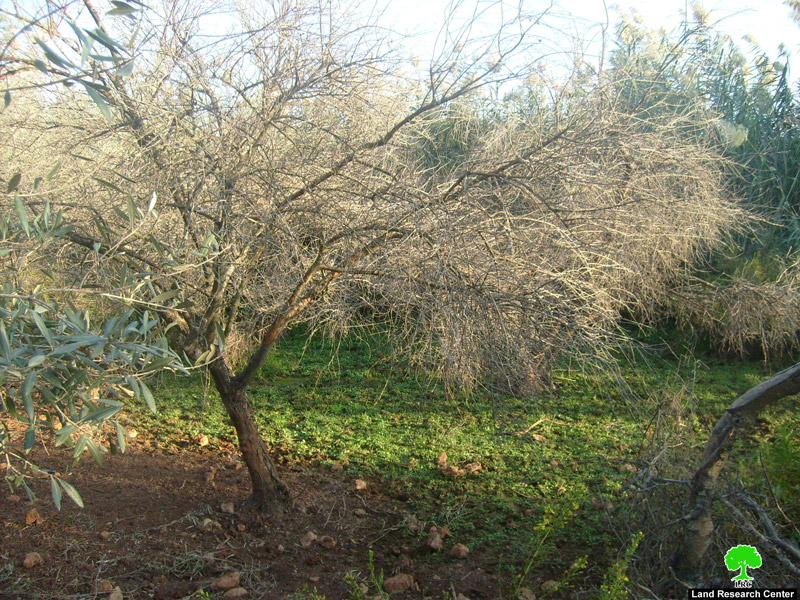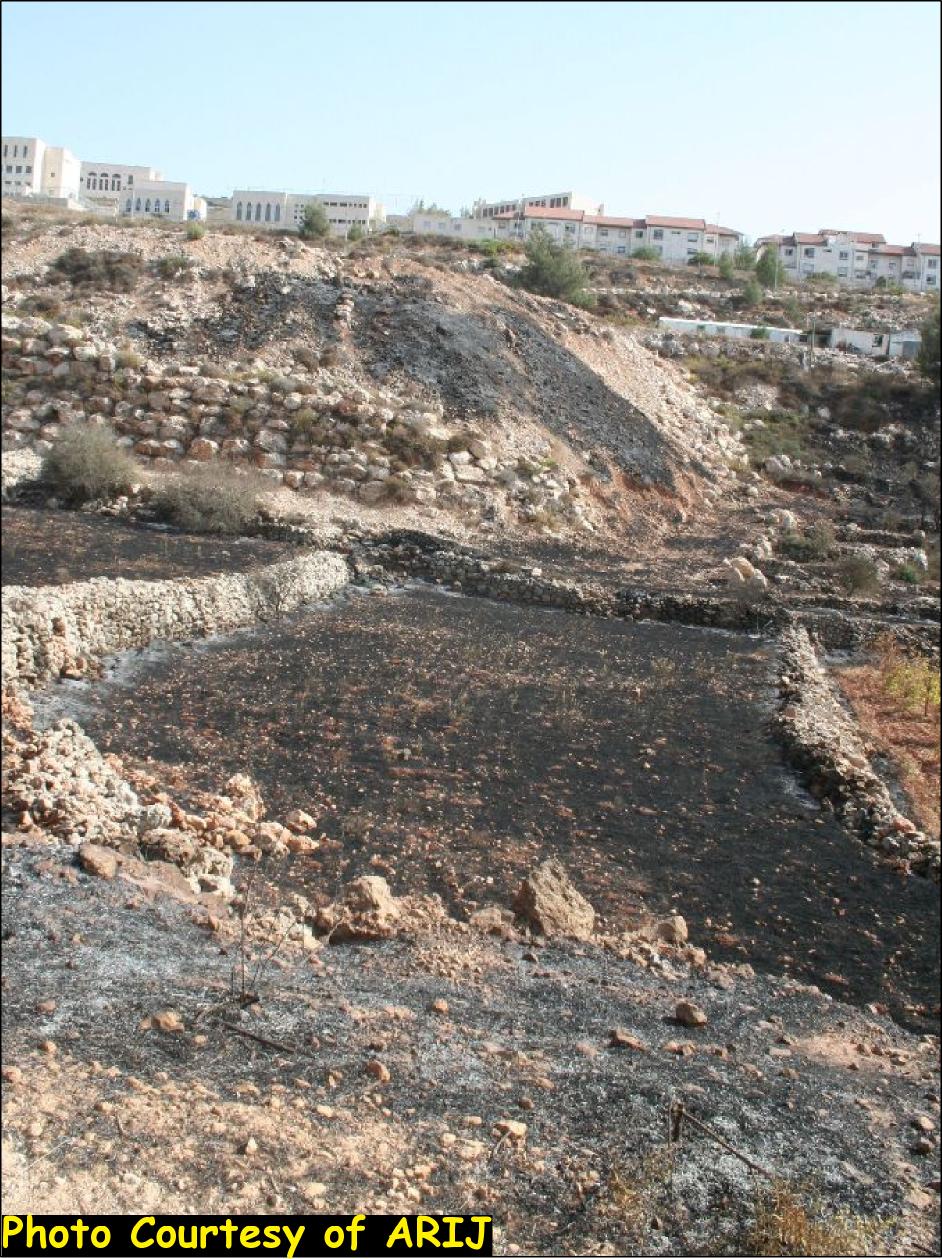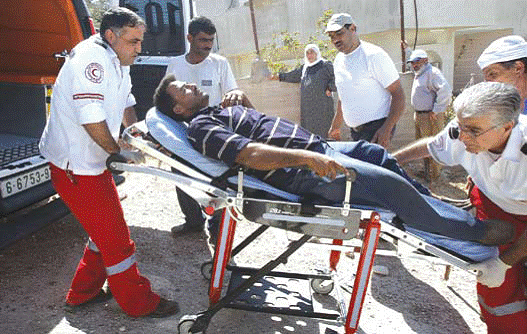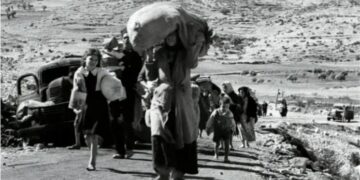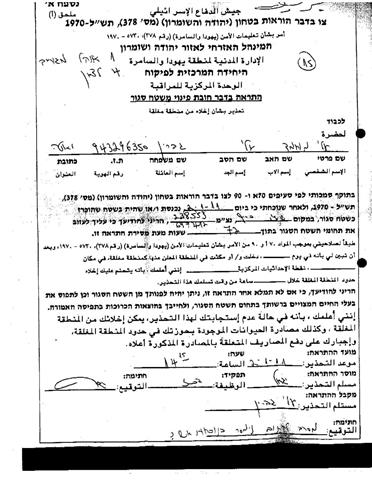-
33 yield theft cases: Kafr Kaddum village in Qalqiliya suffered 17 theft cases alone in addition to the theft of some agricultural equipment.
-
10 olive trees cutting cases: As Sawiyya, Salim, and Al Lubban Ash Sharqi villages suffered from cutting 70 olive trees. Moreover, hundreds of other trees were chopped down in many other areas.
-
Setting huge fields alight: 12 cases of fields deliberately burned by colonists were reported; most of them occurred in Al Lubban Ash Sharqi, Tal, and Far’ata villages.
-
2 chemical attacks: colonists had been using more advanced methods for destroying trees. They used some sort of chemicals that kill olive trees. Such attacks destroyed 480 olive trees in Ramallah Governorate.
-
Pumping sewage towards olive fields inflicted damage on 220 olive trees in Deir al Hatab.
-
Harassments and aggressions against farmers while working in their fields have been recorded regularly. Many farmers were prevented from reaching their fields, others were expelled.
|
Aggression
|
Victims
|
Area (dunum)
|
Damaged trees
|
Estimated loss (USD)
|
|
Burn
|
71
|
115
|
2631
|
3582600
|
|
Cutting, uprooting
|
41
|
22
|
594*
|
809200
|
|
Theft
|
109
|
356
|
3740
|
257094
|
|
Chemical attacks
|
13
|
20
|
480
|
672000
|
|
Pumping sewage
|
24
|
120
|
230
|
322000
|
|
Total
|
258
|
633
|
7635
|
5642894
|
|
Governorate
|
location
|
Trees
|
||||
|
Cutting, uprooting
|
Burn
|
Theft of crop
|
Poisoned
|
Damaged by sewage
|
||
|
Hebron
|
Yatta – Susiya
|
—
|
—
|
125
|
—
|
—
|
|
Bethlehem
|
Husan
|
—
|
180
|
—
|
—
|
—
|
|
Al Walaja
|
400
|
—
|
—
|
—
|
—
|
|
|
Jerusalem
|
At Tur
|
40
|
—
|
—
|
—
|
—
|
|
Ramallah
|
Turmus ‘Ayya
|
40
|
—
|
—
|
100
|
—
|
|
Deir ‘Ammar
|
—
|
52
|
—
|
—
|
—
|
|
|
Al Janya
|
25
|
—
|
200
|
—
|
—
|
|
|
Bitillo
|
—
|
—
|
70
|
—
|
—
|
|
|
Al Maghir
|
—
|
—
|
—
|
380
|
—
|
|
|
Salfit
|
Mas-ha
|
—
|
—
|
600
|
—
|
—
|
|
Kafl Haris
|
|
|
325
|
—
|
—
|
|
|
Qalqiliya
|
Kafr Kaddum
|
—
|
43
|
106
|
—
|
—
|
|
Kafr Kaddum – Al Habayel
|
—
|
—
|
250
|
—
|
—
|
|
|
Fer’ata
|
—
|
190
|
—
|
—
|
—
|
|
|
Fer’ata – Al Sateh
|
—
|
—
|
1180
|
—
|
—
|
|
|
Governorate
|
Location
|
trees
|
||||
|
Cutting, uprooting
|
Burn
|
Theft of crop
|
Poisoned
|
Damaged by sewage
|
||
|
Nablus
|
Jama’een – south part
|
6
|
—
|
—
|
—
|
—
|
|
Salim – Al Lahd
|
—
|
130
|
—
|
—
|
—
|
|
|
Tal – Qarn Shkeit
|
—
|
341
|
—
|
—
|
—
|
|
|
Jet – eastern part
|
—
|
24
|
—
|
—
|
—
|
|
|
Huwwara
|
—
|
37
|
—
|
—
|
—
|
|
|
Huwwara – Hawd al Naqara
|
50
|
–
|
—
|
—
|
—
|
|
|
‘Awarta – north eastern part
|
—
|
87
|
—
|
—
|
—
|
|
|
‘Awarta – Hawd al Kalab
|
7
|
—
|
—
|
—
|
—
|
|
|
Al Lubban ash Sharqi – southern part
|
—
|
47
|
—
|
—
|
—
|
|
|
Al Lubban ash Sharqi – Al Najma
|
14
|
—
|
—
|
—
|
—
|
|
|
Al Lubban ash Sharqi – Al Batin
|
—
|
—
|
24
|
—
|
—
|
|
|
Burin – Dar al Sabi’
|
12
|
—
|
250
|
—
|
—
|
|
|
Burin – Bab at Tina
|
—
|
—
|
275
|
—
|
10
|
|
|
Yanun – eastern part
|
—
|
—
|
17
|
—
|
—
|
|
|
Yanun – Bab al Waqf
|
—
|
—
|
300
|
—
|
—
|
|
|
As Sawiyya – eastern part
|
—
|
—
|
18
|
—
|
—
|
|
|
Tal – ‘Imarat al Mansoura
|
—
|
1500
|
—
|
—
|
—
|
|
|
|
Deir al Hatab – Wadi al Jaghoub
|
—
|
—
|
—
|
—
|
220
|
|
total
|
594
|
2631
|
3740
|
480
|
230
|
|
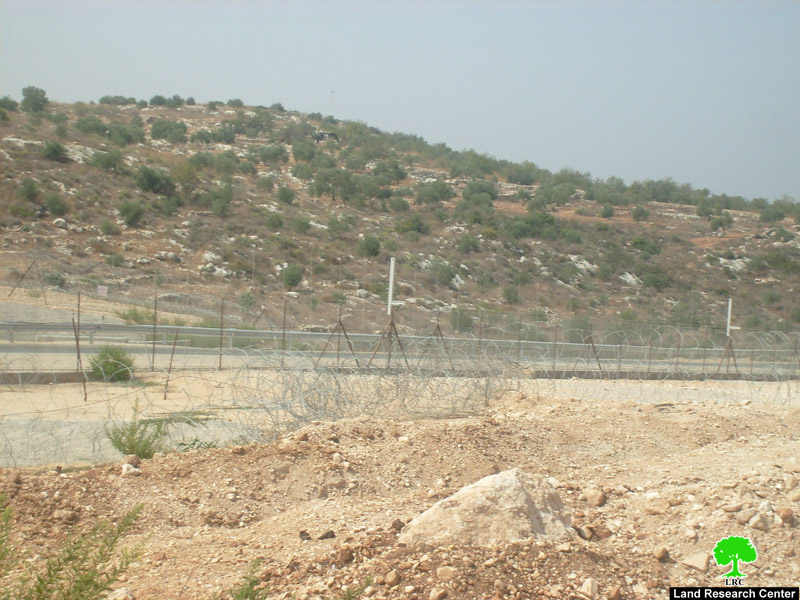
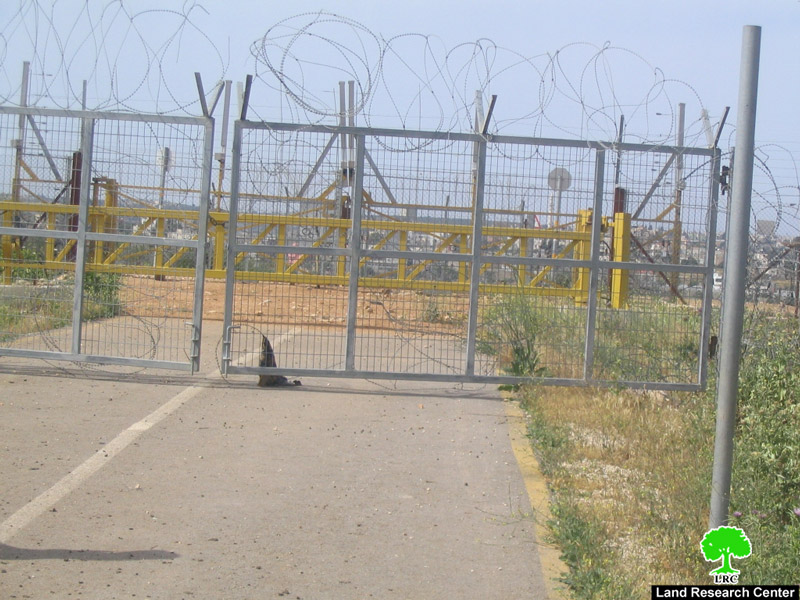
Segregation wall gate number 1534 located in Mas-ha village; more than 2200 Palestinian farmers were prevented from reaching their lands – Qalqiliya

2 Israeli colonists trying to prevent Palestinians from reaching their fields – Fir’ata – Qalqiliya on October 15, 2010 – AP
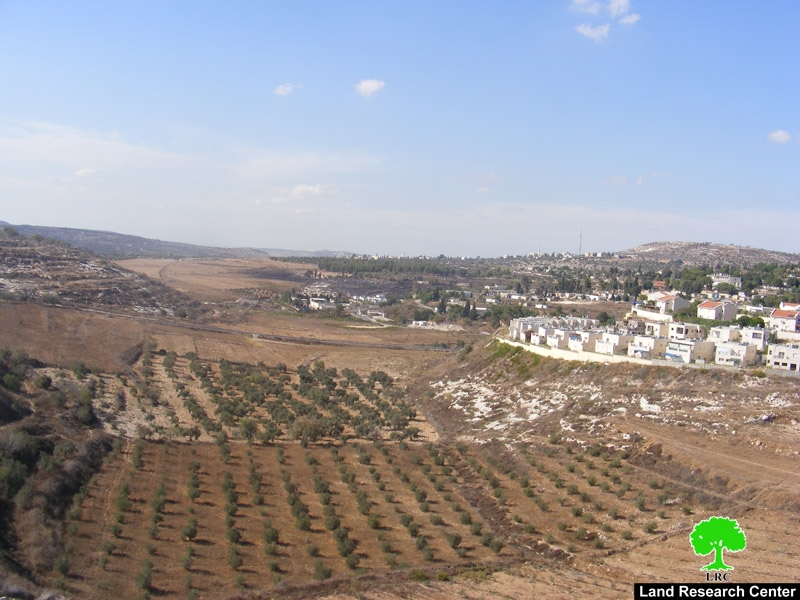
who were trying to steal the olive crop on October 20, 2010 – Barqa – Nablus – AFP
The Land Research Center
LRC


